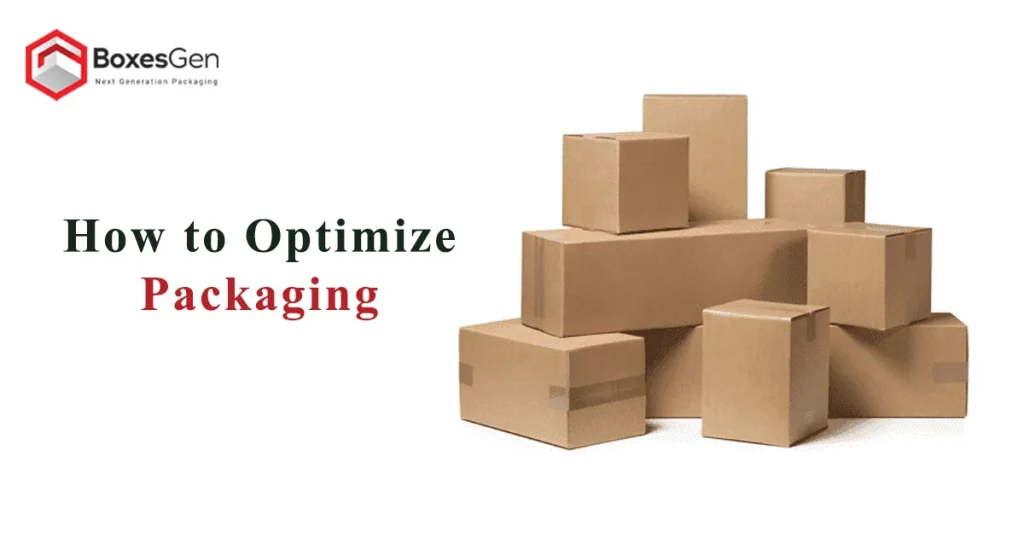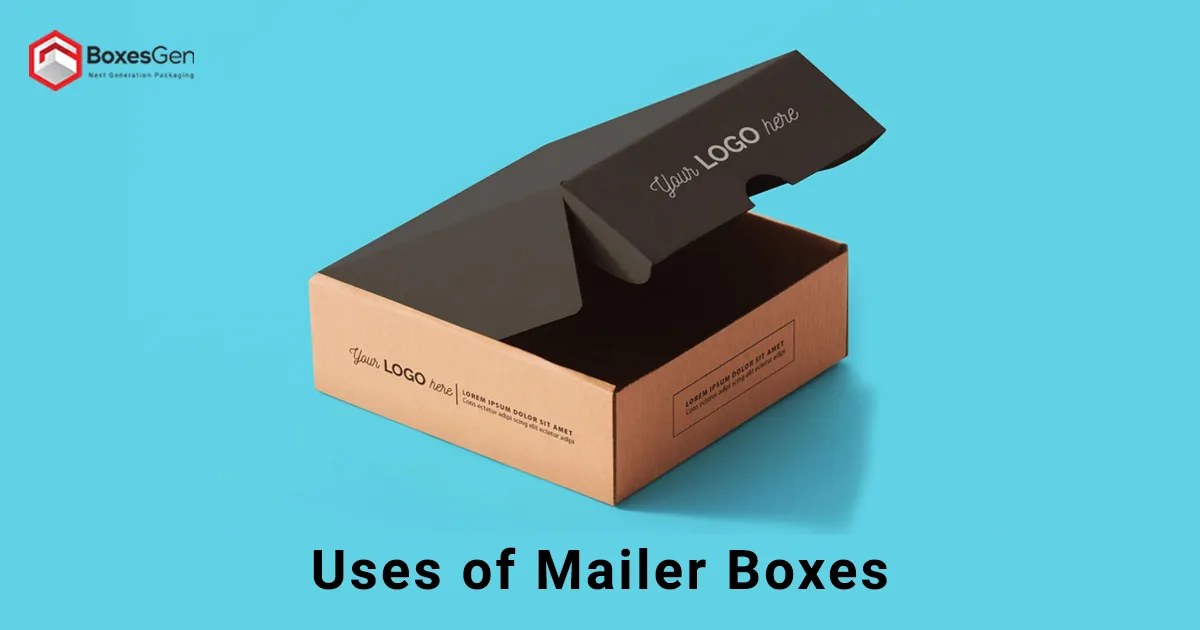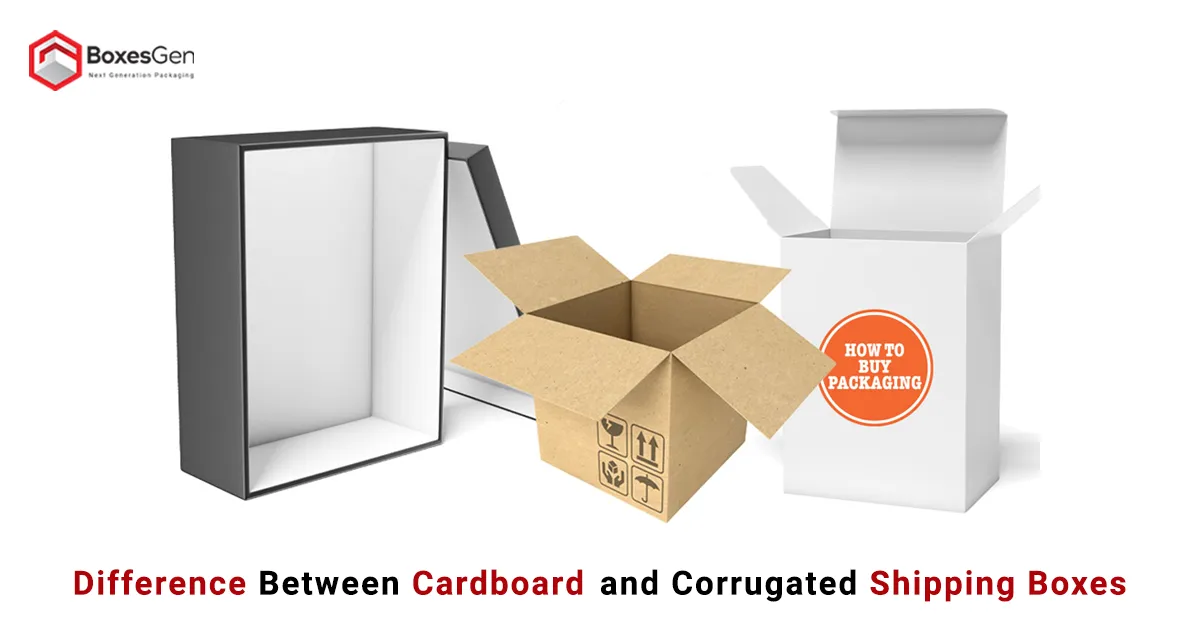How to Optimize Packaging
Optimizing packaging has become a critical consideration for businesses across industries with rising environmental consciousness and consumer expectations. Efficient and sustainable packaging aligns with the growing global awareness of ecological responsibility. It presents an opportunity for companies to improve their brand image, reduce costs, and meet evolving consumer demands.
As the Custom Packaging landscape evolves, this article explores essential strategies and innovative approaches to optimize packaging, focusing on environmental sustainability and practical efficiency. Whether you’re a small business looking to minimize your ecological footprint or a large corporation seeking to streamline logistics, the following insights will guide you toward creating packaging solutions that are both impactful and resource-efficient.
Select Packaging Materials
Selecting suitable packaging is vital for product protection, presentation, and sustainability. Factors like product type, fragility, and environmental impact influence material choice. Options range from traditional Cardboard Boxes and plastic to innovative, eco-friendly materials like biodegradable and compostable packaging. Increasingly, businesses prioritize sustainability to minimize environmental impact. Technological advancements also introduce smart packaging materials, enhancing the customer experience.
Packaging Optimization
Packaging optimization increases packaging efficiency, sustainability, and effectiveness by evaluating design, materials, and dimensions for the best protection, functionality, and environmental impact. Utilizing innovative technologies minimizes excess packaging, reduces waste, and improves transportation efficiency. The ultimate aim is to improve the supply chain, meet consumer expectations and regulatory requirements, contribute to cost savings, and align with global sustainable product development and distribution practices.
Diversify Your Packaging
Diversifying packaging strategically benefits businesses by appealing to a wider audience through varied materials, sizes, and Packaging Designs. This approach augments brand image, creating a memorable market presence. Moreover, diverse packaging supports environmental sustainability, utilizing eco-friendly materials and minimizing waste. Customization based on product nature ensures optimal protection during transport and storage. Overall, diversifying packaging showcases innovation, adaptability, and responsiveness to consumer demands and market trends.
Maximize Packing Space
Maximizing packing space in Custom Product Packaging is crucial for efficient logistics. The aim is to optimize space usage while ensuring product safety during transit. Strategies include custom-designed packaging, modular solutions for efficient stacking, and materials with minimal bulk. Advanced software can analyze packing configurations, enhancing space utilization. This focus improves cost-effectiveness and reduces environmental impact by minimizing excess materials and transportation space.
Minimize Waste
In optimizing packaging, minimizing waste is crucial for environmental benefits, cost savings, and sustainability. Using eco-friendly materials and efficient design reduces environmental impact. Implementing waste-reducing manufacturing processes and innovative technologies, like smart packaging, contributes to sustainability. Educating consumers on recycling and promoting Reusable Packaging aligns businesses with environmental consciousness and meets the demand for responsible packaging.
Packaging Redesign
Packaging redesign optimizes product presentation, competitiveness, and environmental sustainability. It strategically overhauls visual and functional aspects to boost brand identity and consumer experience and align with eco-friendly practices. The goal is to attract attention, resonate with the target audience, and stay relevant in a dynamic market. Incorporating sustainable materials reduces environmental impact, aligning with the demand for eco-conscious choices. Effective redesign optimizes market presence, aligns with contemporary values, and fosters positive consumer perception.
Use A Suitable Amount of Packaging
Regarding Sustainable Packaging, it is crucial to use an appropriate amount. Balancing product protection and environmental impact is key. Excessive packaging leads to waste and higher transportation costs. Inadequate packaging results in damaged goods and dissatisfaction. By evaluating each product’s needs, businesses can minimize excess, reducing environmental impact and improving efficiency and customer satisfaction. In today’s eco-conscious era, optimizing packaging is vital for promoting sustainability in business.
Use Reusable Packaging
Optimizing packaging involves adopting reusable materials and reducing environmental impact and waste. Encouraging businesses to use durable, washable options contributes to a circular economy, aligning with eco-conscious values and enhancing brand image. Reusable packaging minimizes waste generation and long-term production costs, making it a financially and environmentally responsible choice. Consumers appreciate sustainability efforts, fostering loyalty. Implementing reusable packaging reduces carbon footprints and promotes conscious consumption, which is vital for sustainable packaging strategies.
Automate Packaging Operations
Automating packaging with technologies like robotic arms, conveyors, and smart systems optimizes efficiency, cuts costs, and boosts productivity in manufacturing. Investing in automation improves precision and speed and reduces errors, minimizing manual intervention. Embrace automation and improve adaptability to production changes, responding swiftly to market demands. Beyond operational advantages, automation reduces material wastage and energy use, contributing to sustainability. Embracing automation is a strategic move that optimizes manufacturing and fosters a sustainable, competitive business model.
Invest in Automation
Investing in automation is crucial for optimizing packaging. It accelerates production and augments efficiency, accuracy, and cost-effectiveness. Automated machinery reduces manual labor, minimizes errors, ensures consistent output, and improves quality control. This scalability fosters adaptability to fluctuating demands, streamlining operations and enhancing competitiveness. Embracing automation is essential in the evolving packaging industry, fostering innovation and boosting productivity and profitability.
Assess Your Packaging Needs
Assess your packaging needs by understanding your product’s nature, fragility, size, and weight. Consider market expectations, regulatory requirements, and environmental impact for a tailored, cost-effective solution ensuring customer satisfaction.
Reduced Packaging Costs
Reducing packaging costs is crucial for businesses. Streamlined solutions cut expenses in materials, manufacturing, and transportation. Lightweight, durable materials maintain product integrity, minimizing packaging volume. Right-sizing packaging and automating processes reduce labor costs and improve efficiency. Eco-friendly materials align with sustainability goals, cutting long-term waste disposal expenses. Optimizing packaging boosts cost efficiency and environmental responsibility in the supply chain.
Reduce Packaging Size
Optimizing packaging involves minimizing excess material and reducing the overall size of box packaging. Not only does this approach contribute to environmental sustainability by decreasing waste, but it also cuts shipping costs and allows for more efficient use of storage space.
Cheaper Shipping
Choosing smaller, lightweight packaging materials can significantly lower shipping costs. By minimizing the weight and dimensions of packages, businesses can take advantage of lower shipping rates and ultimately pass on the savings to customers, making their products more competitive.
Customer Satisfaction
Efficient and eco-friendly packaging benefits the environment reduces costs and improves customer satisfaction. Customers appreciate thoughtfully packaged products, reflecting a commitment to sustainability and a positive overall shopping experience. Satisfied customers are likelier to become repeat buyers and recommend the brand to others.
Improve Employee Training
Well-trained employees can play a crucial role in optimizing packaging processes. Proper training ensures that packaging is done efficiently, minimizing errors and reducing the risk of damaged goods. Investing in employee training can lead to increased productivity and a smoother overall packaging operation.
Pack with Sustainable Materials
Incorporating sustainable materials into packaging aligns with growing environmental consciousness. Eco-friendly materials reduce the ecological footprint and appeal to environmentally conscious consumers. Brands can leverage sustainable packaging as a unique selling point, differentiating themselves in the market.
Pack Your Items Properly
Proper packing techniques can prevent damage during transit and reduce the likelihood of returns. Ensuring items are securely packed, with protective measures, contributes to customer satisfaction and minimizes the need for replacements or refunds. This approach saves both time and resources.
Smart Packaging
Implementing Smart packaging technologies, such as sensors or RFID tags, can provide real-time tracking and monitoring of shipments. This helps prevent losses and enables businesses to address issues, enhancing overall supply chain efficiency promptly.
Use Padded Envelopes
Opting for padded envelopes instead of traditional boxes for smaller, less fragile items can reduce packaging size and weight. Padded envelopes provide sufficient protection while being more cost-effective and environmentally friendly.
Use Smaller Boxes
Choosing appropriately sized boxes for items can eliminate unnecessary void fillers and reduce packaging waste. This approach saves on materials and optimizes storage space, leading to more efficient warehouse management and cost-effective shipping.
Conclusion
Optimizing packaging is not merely a cost-cutting strategy but a comprehensive approach that benefits businesses, customers, and the environment. By embracing efficient design practices, incorporating sustainable materials, and implementing smart technologies, companies can reduce costs, increase customer satisfaction, and contribute to environmental sustainability. The importance of proper employee training and the strategic use of high-quality packaging material, such as padded envelopes and smaller custom boxes, cannot be overstated. In doing so, businesses create a more responsible and efficient supply chain where economic considerations align seamlessly with environmental consciousness. Optimizing packaging in the ever-evolving commerce landscape emerges as a pivotal element, offering a win-win scenario that fosters success, customer loyalty, and a positive impact on the planet.
Frequently Asked Questions of Optimized Packaging
What Is Optimized Packaging?
Optimized packaging is the strategic design and implementation of packaging solutions to achieve the most efficient, cost-effective, and environmentally friendly outcome, balancing product protection and consumer appeal.
How Do You Optimize Product Packaging?
Product packaging optimization involves minimizing waste, reducing costs, and enhancing sustainability. This is achieved through right-sizing, eco-friendly materials, smart design, and streamlined processes.
Why Is Packaging Optimization Important?
Packaging optimization is vital for cost reduction, increased sustainability, and improved customer satisfaction. It ensures efficient resource use, minimizes environmental impact, and aligns with evolving consumer preferences, contributing to overall business success.
How Do We Improve the Packaging?
Improving packaging involves embracing efficient design practices, incorporating sustainable materials, right-sizing packages, and implementing smart technologies. Employee training, strategic material use, and eco-friendly choices play crucial roles in enhancing overall packaging efficiency.
Why Is Optimization Important?
Optimization is essential for minimizing costs, reducing environmental impact, and maintaining product quality. It ensures that packaging aligns with industry standards, consumer expectations, and sustainability goals, fostering responsible business practices.
What Is the Difference Between Optimized and Optimized?
There seems to be an error in the question; however, if you meant “optimized” and “optimized,” there is no difference. It might be a typographical mistake.
What Are the Three 3 Levels of Packaging?
The three levels of packaging are primary (directly in contact with the product), secondary (holds primary packaging together), and tertiary (protects during shipping and handling).
What Are the Three 3 Types of Packaging?
The three types of packaging are primary (immediate contact with the product), secondary (holds primary packaging together), and tertiary (outermost layer for shipping and handling).
What Is Mode of Packaging?
The mode of packaging refers to the specific method or manner in which products are packaged for distribution, considering factors like material choice, design, and protective measures during transport.
What Is Strategic Packaging?
Strategic packaging involves purposeful design, materials, and branding decisions to achieve specific business goals, such as cost reduction, sustainability, or increased consumer appeal.
Why Advanced Packaging?
Advanced packaging integrates innovative technologies, materials, and design practices to increase product protection, reduce waste, and meet the market’s ever-changing demands.
What Is Package Quality?
Package quality refers to the overall effectiveness of packaging in protecting the product, preserving its integrity, and meeting consumer expectations.
How Can Packaging Optimization Impact the Supply Chain?
Packaging optimization in the supply chain reduces costs, improves efficiency, minimizes waste, and improves sustainability. It streamlines processes, leading to a more responsible and cost-effective supply chain.
What Are the Examples of Advanced Packaging?
Advanced packaging includes smart packaging with sensors, RFID technology, and innovative materials designed to improve product protection, traceability, and efficiency.
How Do You Optimize Product Packaging?
Product packaging optimization involves minimizing waste, reducing costs, and enhancing sustainability. This is achieved through right-sizing, eco-friendly materials, smart design, and streamlined processes.
How Can Packaging Be Improved?
Packaging can be improved by adopting efficient design practices, incorporating sustainable materials, right-sizing packages, implementing smart technologies, and considering employee training in the optimization process.
Why Is Packaging Optimization Important?
Packaging optimization is crucial for cost reduction, increased sustainability, and improved customer satisfaction. It ensures efficient resource use, minimizes environmental impact, and aligns with evolving consumer preferences, contributing to overall business success.
What Are the Four 4 Factors to Consider in Packaging?
The four factors to consider in packaging are cost-effectiveness, sustainability, protection of the product, and consumer appeal. Balancing these aspects ensures a well-rounded and optimized packaging solution.
What Is Optimized Packaging?
Optimized packaging is the strategic design and implementation of packaging solutions to achieve the most efficient, cost-effective, and environmentally friendly outcome, balancing product protection and consumer appeal.
What Does Optimized Packaging Mean?
Optimized packaging means strategically designing and implementing packaging solutions to achieve the most efficient, cost-effective, and environmentally friendly outcome, considering waste reduction, material efficiency, and product integrity.
What Are The 3 Factors That Make a Good Packaging Design?
Three factors that make a good packaging design include functionality (protecting the product), aesthetics (consumer appeal), and sustainability (minimizing environmental impact).
How Do You Ensure Sustainable Packaging?
Ensuring sustainable packaging involves using eco-friendly materials, minimizing waste, adopting recyclable options, and reducing the overall environmental footprint of the packaging process.
What Is the Best Way to Optimize Material Use?
The best way to optimize material use is by adopting right-sizing practices, choosing lightweight yet durable materials, and incorporating eco-friendly options to minimize waste and environmental impact.
What Is Packaging in Product Strategy?
Packaging in product strategy involves using the design and presentation of packaging to align with the overall branding and marketing goals, contributing to product differentiation and consumer appeal.
How Does Packaging Maximize Sales?
Packaging maximizes sales by attracting consumers through appealing design, providing clear product information, ensuring product quality, and creating a positive overall customer experience that encourages repeat purchases.








